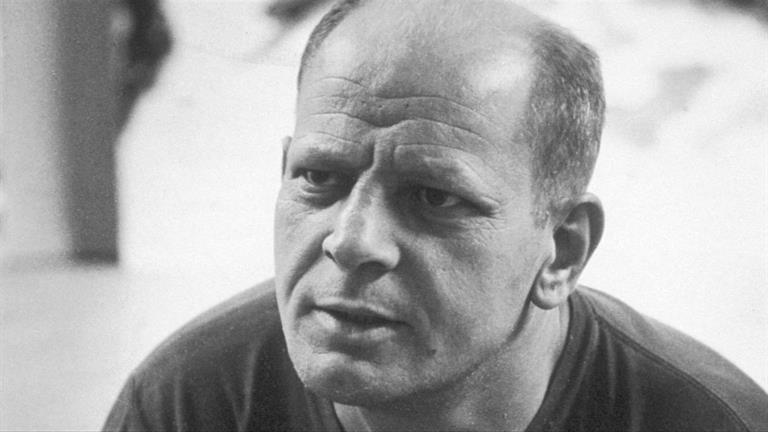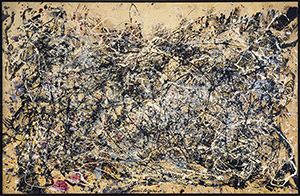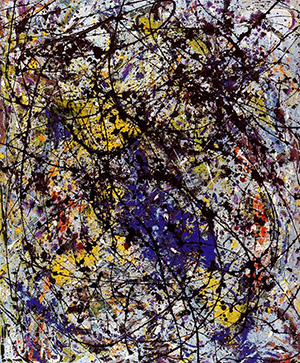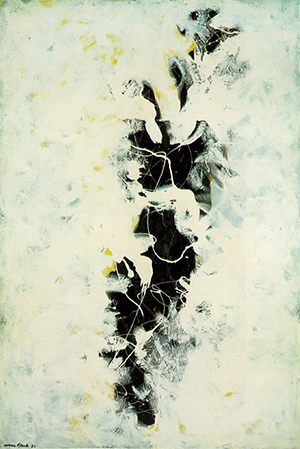



Jackson Pollock (1912–1956) was an American painter, and a major player in the abstract expressionist movement. A coveted life of the artist, he was considerably famous and considered a major artist of his generation in his life time. However, Pollock struggled with alcoholism which eventually led to his death in 1956 at the age of 44.
Born in Cody, Wyoming, Pollock was the youngest of five sons. In 1912 his mother, Stella, left for San Diego with the children when he was just 10-months-old, and they never returned to Wyoming. Pollock spent the rest of his childhood in Arizona and California. In 1930 Pollock moved to New York City, and studied at Art Students League under Thomas Hart Benton: a major influence in Pollock’s painting technique. From 1938—1942, he underwent Jungian Therapy to try and deal with his already established alcoholism, where he was encouraged to create work. The concepts he learned in therapy are evident in his painting, and now historians believe that he might have been bipolar.
Pollock’s most notable works were created between 1947 and 1950 during his “drip period.” His famous style set aside the tradition method of using brushes to apply paint. Using hardened brushes, sticks, basting syringes, and even just dumping the paint from the can, Pollock engaged his whole body in the process of making art. The style is immediate and added new dimensions the art making process as off the easel, he could paint from all sides of the canvas.
Pollock’s life ended suddenly on August 11, 1956 when he got into a car accident driving drunk. His legacy lives on as a hotly debated artist. The jury is out among critics on whether or not the work he created is actually great art.
Number 1, 1948 / Reflection of the Big Dipper, 1947 / The Deep, 1953



